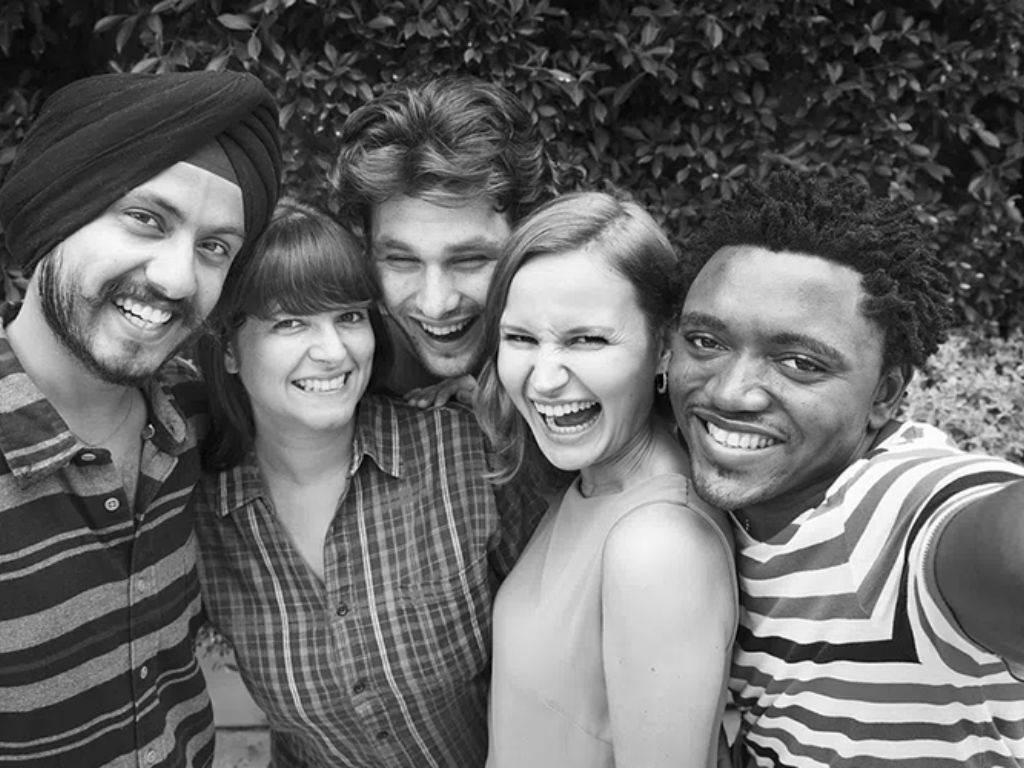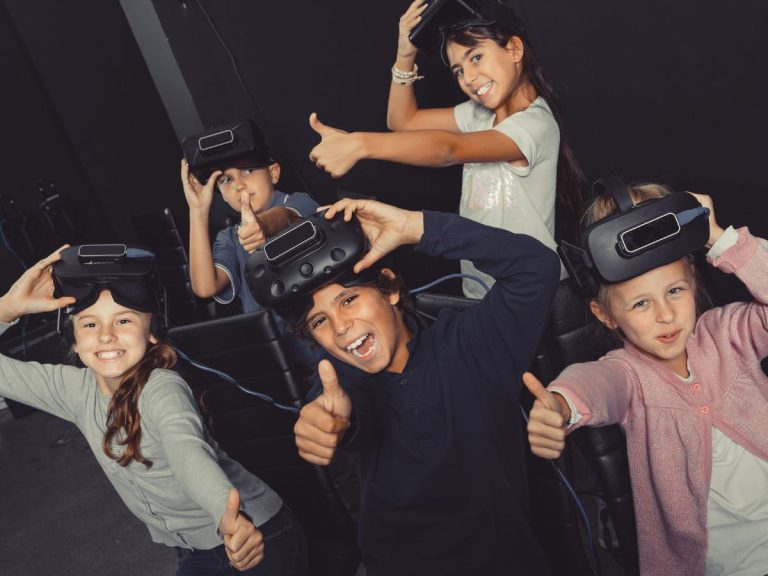Choosing the Right Group Size for Your Escape Room Adventure
All right, let’s set the scene: You’re locked in a room, clues scattered everywhere, clock ticking down. No, this isn’t a scene from a horror movie, but a thrilling escape room game that’s got everyone talking. From Melbourne to Montreal, these immersive experiences are becoming the go-to for a unique night out or fun family adventures. But hold onto your puzzle pieces, folks! One crucial element that can make the difference between a successful escape and a frustrating dead-end: choosing the right group size. More about this in 2 minutes.
Welcome to Entermission, the ultimate destination for escape room enthusiasts! Our virtual escape rooms offer an unparalleled experience that will transport you to a world of mystery and intrigue. As one of the leading providers of escape room adventures, we understand that choosing the right group size is crucial to a successful experience, and that’s why we’ve put together this handy guide to help you make the most of your adventure.
So, whether you’re planning a night out with friends, a team-building exercise, celebrating birthdays, or a family activity, we’ve got you covered. From small-group escapes to large-group escapades, our virtual escape rooms cater to all sizes and skill levels. So, what are you waiting for? Step into our world of puzzles and codes, and let the games begin! Click here to book now.

Understanding the Dynamics of Group Size in Escape Rooms
Size matters, at least when it comes to escape rooms. A group too small may struggle with the breadth of clues, and a group too large might find itself entangled in a web of over-communication.
Here’s the kicker: the right group size can enhance gameplay, smooth communication, strengthen collaboration, and fine-tune problem-solving abilities, all while managing your most precious resource – TIME. In the end, it’s all about balancing challenge and enjoyment, and that equilibrium often starts with your group size.
Small Group Escapes: The Magic of Two or Three Players
Imagine being in a room with just two or three of your best mates, your brains working in sync to crack the puzzle. In small groups, everyone is intimately involved, and every voice is heard. Communication is more streamlined, and coordination can often feel like a well-rehearsed dance.
But here’s a pinch of reality salt: with a smaller pool of ideas, you might find yourself grappling with limited perspectives and skill sets. Plus, with the clock ticking away, time constraints can feel tighter than a drum. It’s like taking on a jigsaw puzzle with missing pieces – the challenge is there, but it can sometimes feel like an uphill battle.

Medium-Sized Groups: Finding the Sweet Spot
Finding the right group size can be a bit like Goldilocks tasting porridge – you’ve got to find the one that’s just right. For many, a medium-sized group offers a delicious blend of diverse skill sets and perspectives. The workload is balanced, and collaboration feels like a sweet symphony.
But here’s the twist: as the group size increases, so do the complexities of group dynamics and leadership. And let’s not forget, that escape room isn’t getting any bigger! It’s like herding cats – possible, but it requires some skill and patience.
Large Group Escapades: Thriving with a Crowd
If you’re someone who believes that the more, the merrier, then large group escapades are for you. You’ve got plenty of minds to mull over puzzles, and the division of labour would make a beehive look disorganised.
Not to mention, the atmosphere is electric, with an energetic buzz that’s hard to match. But here’s where it gets tricky: with a larger group, communication can become a game of Chinese whispers, and there’s a risk of some players getting lost in the crowd. It’s like trying to conduct an orchestra without a baton – chaotic but with the potential for harmony.
Is intelligence the Key to Success in an Escape Room? Explore our blog for more.

Tailoring Group Size to Escape Room Difficulty Levels
Not all escape rooms are created equal, and your group size should reflect that. Beginner-level rooms, with simpler puzzles and fewer distractions, may be more manageable for smaller groups. As the difficulty ramps up to intermediate-level rooms, you might want to recruit a few more brainiacs to the cause. And for those brain-busting advanced-level rooms? You might need to bring out the big guns and assemble a veritable think tank. It’s like scaling a mountain – the higher the peak, the more resources you’ll need to reach the top.
Strategies for Navigating Mixed Group Sizes
Life’s a mixed bag, and sometimes, so are your group sizes. If you find yourself with a motley crew of different-sized groups, fear not. It’s all about strategy. You must:
- Assign roles and responsibilities to keep everyone engaged.
- Foster effective communication to ensure no clue goes unnoticed.
- Adapt the game to accommodate everyone because nobody likes to feel like a fifth wheel.
It’s like conducting a symphony with a variety of instruments – each plays a unique role, but they all come together to create a beautiful piece of music.
Tips for Choosing the Right Group Size
So, how do you hit the bullseye when it comes to picking the right group size for your escape room adventure? Here’s a quick cheat sheet.
- First, assess the experience level and dynamics of your participants. You wouldn’t want to toss a bunch of first-timers into the deep end, right?
- Second, consider the size and complexity of the escape room. There’s no point in packing it tighter than a rush-hour train.
- Finally, don’t be shy about asking for recommendations from the escape room operators. They’ve seen it all, and their advice can be invaluable.
And now, the moment you’ve been waiting for. It’s time to put the tips into action!
Get all the details on how to use your phone within an escape room setting.

Ready to Put Your Skills to the Test?
And there you have it, folks! Choosing the right group size for your escape room adventure isn’t just a numbers game. It’s a careful consideration of factors like group dynamics, escape room complexity, and the individual experiences of the participants.
It might seem like a lot to take in, but remember, the goal is to have fun! So don’t be afraid to experiment, mix things up, and find your sweet spot for maximum enjoyment and success. After all, escape rooms are all about the thrill of the chase, the camaraderie of the team, and that sweet, sweet moment of triumph when you finally crack the code.
If this guide has sparked a fire in your puzzle-solving heart, it’s time to step up to the plate. Join us at Entermission Melbourne and experience the thrill of a virtual escape room adventure. Whether you’re a duo of detectives or a crowd of code-crackers, we’ve got a room that’s just right for you.
Don’t just sit there dreaming about locks and riddles. Grab your friends, family, or co-workers and start planning your escape room adventure today. After all, there’s nothing quite like the thrill of that final ‘Aha!’ moment when you crack the code and make your grand escape.
So, what are you waiting for? Click here to book your unforgettable escape room experience at Entermission. Unleash your inner Sherlock Holmes and let the games begin!
FAQ
Can You Participate in An Escape Room by Yourself?
Escape rooms are designed to be team games and are best experienced in groups. Going solo undermines the core concept of escape rooms. Hence, we strongly suggest taking your mates, partner, or family along for the ride. Entermission Melbourne does not accept solo bookings. So, gather your gang and get ready for an exhilarating experience.
Can You Play an Escape Room Game with 2 Players?
Absolutely! Escape rooms can be a thrilling experience for two. Think of it as a romantic dinner or a cosy coffee date with a side of brain-busting riddles. It’s all about heightened involvement, enhanced communication, and an intense dash of adrenaline. Remember, two heads are better than one, so if you’re stuck, put your heads together and try looking at things from a different angle!
How Many Players Are Typically Needed for An Escape Room?
It’s a bit like asking, “How long is a piece of string?” The answer varies depending on the complexity of the room and the experience level of the players. However, as a rule of thumb, most escape rooms cater to groups of 2-6 players. It’s like a soccer team – you need enough players to cover the field but not so many that you’re tripping over each other.
Is An Escape Room Still Enjoyable With 3 Players?
Three’s a crowd? More like, three’s a charm! With the right mix of skills and a healthy dose of teamwork, a trio can conquer an escape room and have a blast while doing it. It’s like a three-legged race – it might take a bit of coordination, but once you get the rhythm, you’ll be speeding towards the finish line.
Can You Do an Escape Room with Large Groups, like 25 Or 30 People?
Wowza, that’s a party! While some escape rooms might struggle to accommodate such large numbers, others, like Entermission Melbourne, offer virtual escape room experiences that are perfect for larger groups. It’s like being at a rock concert, with every participant adding to the electric atmosphere.
Are 7 People Too Many for An Escape Room?
Seven people in an escape room? That’s not a crowd; it’s a dream team! As long as everyone has a role to play, seven can be a lucky number. But remember, it’s like a game of Tetris – if everyone knows where they fit, you’re golden.
Do Escape Rooms Pair You with Random People or Strangers?
Usually, you’ll book an escape room for your private group, but sometimes you might find yourself paired with others. It’s like a surprise party with puzzles! You get to make new friends, and who knows, they might just have the key to that tricky clue you’ve been wrestling with. While some escape rooms allow strangers to play together, others, like Entermission, do not pair strangers. So, gather your friends and get playing!
Is It Fun to Play Escape Rooms with Strangers?
Who doesn’t like a bit of mystery? Playing escape rooms with strangers can be a hoot. You get to mix things up, meet new people, and see different problem-solving strategies in action. It’s like a blind date with brain teasers. But hey, no pressure to exchange numbers at the end!

